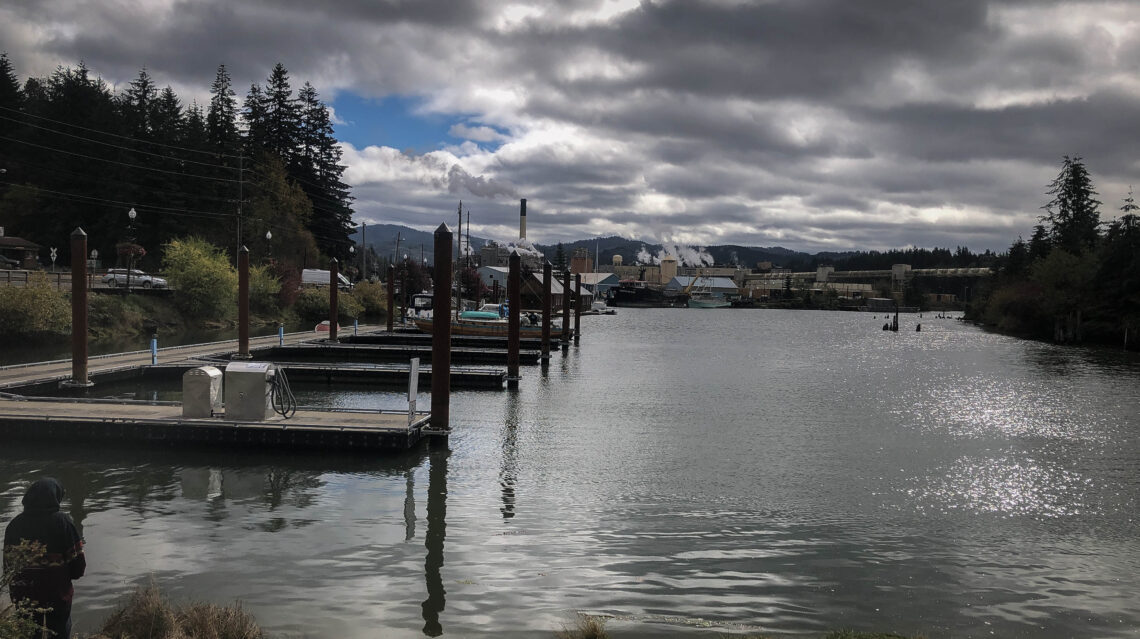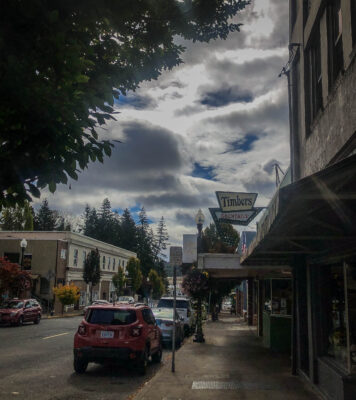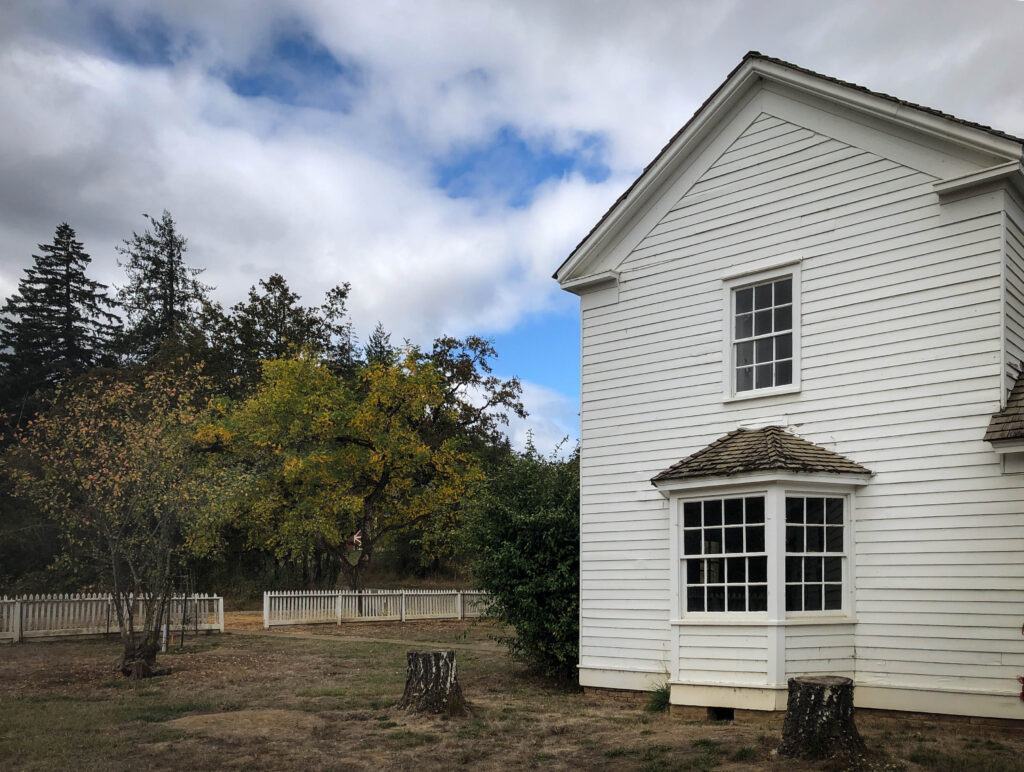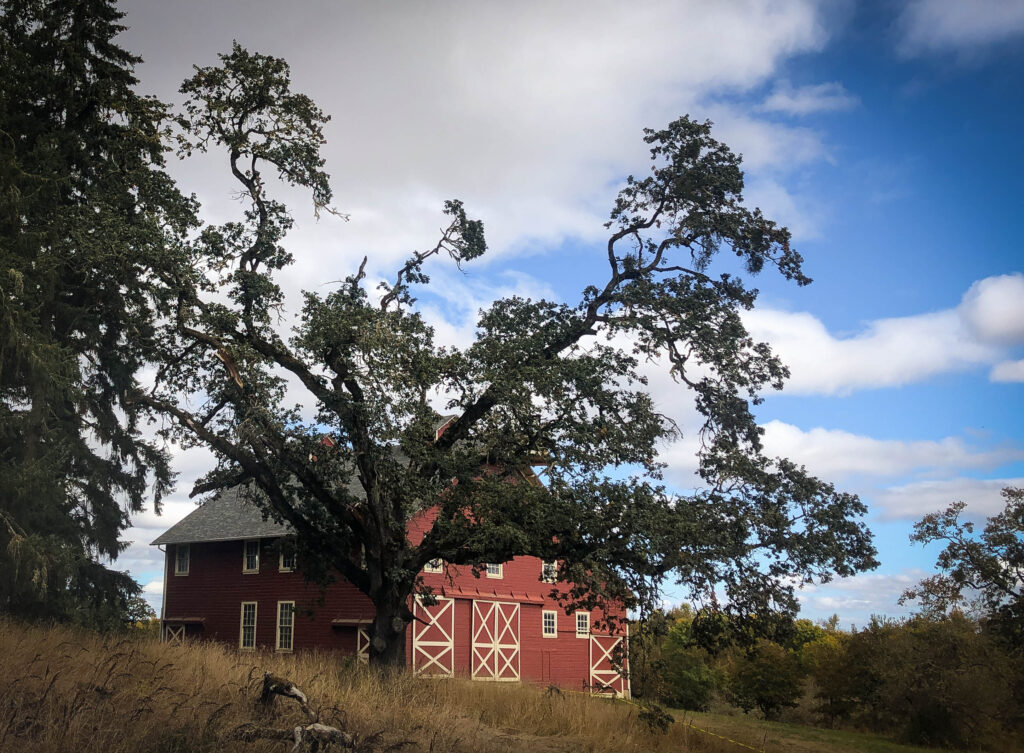
Van Life
Janet has always felt like a passport to happy times.
On more instances than I could possibly count, I have received waves, honks, thumbs up, smiles, invitations to park, questions, and offers to buy her. Ever since I started this journal, my experiences have been strongly shaped by driving a Volkswagen Westfalia camper van, and not just by the adjustment in travel speed. I have felt welcomed and even a little envied, even though she is in original stock condition and has no fancy modifications. Feeling welcomed has been crucial to me since I began this adventure, and my original fears about being treated like a ‘dirty hippy’ were long ago put to rest.
The place featured in the photo up top is Toledo, Oregon. It is a backwater up the Yaquina Bay, on the Yaquina River, and is on a road that dead ends in the trees. In some ways it is a classic lumber town, although one of the mills recently shut down, leaving the one in the picture as the main employer. It is also, quite bizarrely, the site of the annual Van Life campout or gathering or convention or whatever. My waitress at a terrible restaurant where I got chicken fried steak and eggs after leaving Newport told me they have rented out the big meadow in the city park, from which the photo was taken, two years in a row. Aside from not knowing how they chose Toledo, from all the beautiful and fascinating places one can camp in a van, she also told me they were mostly all Mercedes Sprinter vans, which are not quite the same thing as the original van life ethos. Not quite. She said they never came up to the main part of town, just stayed to themselves down in the park for days, with their own bands, own brew, own scene. The bars and restaurants on the old little main street did not receive much patronage. Were they there because they think a mill town is a quirky, hip relic now? Snarkily claiming ‘Toledo, Oregon’ as their new Marfa, Texas? Is this their way of celebrating diversity? I doubt they planned to spend some cash at the nearby Siletz tribe pow wow.
The main street has pretty cool old photographs and stories of the buildings right at the spots on the street where they exist still, or existed when it was a more important town. It was a short but enjoyable walk and showed how the ‘frontier architecture’ used on a lot of the vanished business buildings was really the worst waste of good lumber you could think of. We have a long way to go to develop a culture here. But I liked the photos from the 50s and 60s best, because they showed a lot of energy and civic pride.
We then headed further inland, but before we go there, I’ll tell about the night before.
In the middle of that dry camp area, at three o’clock in the morning, there was a pounding on Janet’s window. Knowing I had no neighbors, I was pretty scared, and it being the middle of the night, my voice didn’t carry with confidence, but was rather a squeaky, scratchy voice, like an angry squirrel.
It was Officer Mohammed, from the security company, telling me I was not allowed to sleep in my car in the parking lot there. Where to start? Can you not see, sir, that this is not a car, this is a holy VW camper? But no, I just angrily told him to look in the windshield at my permit, and look down at the pavement to see the number of the site that matched it. It is not a parking lot, you idiot. I suppose an immigrant from a desperate situation is unlikely to understand the nuances of the culture of old camper vans.
Eventually he went away, and came back to tell me that he had called his supervisor and it was ok for me to stay there. I snarled that I did not need his, nor his supervisor’s permission to rightfully occupy my spot. He apologized very contritely, and said I might call in a complaint if I wanted. I said it seemed it wasn’t his fault, but whomever was to have trained him properly. He very humbly wished me a good night, and I wished him the same. And after he left I felt kind of glad to have had some human interaction and the knowledge that someone was guarding the place.
But I think times are catching up with us, and though everyone says the economy is booming, I doubt it. And maybe a siege mentality is finally setting in, who knows? In deciding where to go for my next night, I had looked up an RV place right on the ocean that we had passed the day before, on a beautiful stretch of empty coast. I discovered that they absolutely do not allow RVs older than the year 2000. In thirteen years of driving all over California and the whole U.S., I have never run into this issue, or even heard of it. And maybe if we just pulled in, we wouldn’t be turned away. But the chill of doubt and judgment was a terrible new feeling. I’ve never felt disrespected just for being old. I’ve laughed at the idea.
But after Toledo, I drove some back roads to the Finley Wildlife Refuge and had a great time wandering over old pioneer homesteads and imagining their lives. This is the Fiechter House, built on a land claim in 1855, and one of the few examples of so-called Greek Revival architecture still left in Oregon. The lumber was milled on the homestead from trees found here, and the bricks for the fireplace were also made on site of local clay. It is uninhabited. The husband was from Germany and I can’t remember where the wife was from, but her last name was Newton, and I think she was a local girl. They had seven kids, one of whom married a newcomer named Cabell who did very well and who built a house and barns nearby. His house was newer (1912) and quite fancy and someone burnt it down last winter, probably because it was called a ‘hunting lodge,’ and sport hunting is probably colonialism. But a couple of cool barns were just up the hill and I imagined kids playing with neighboring kids in their very insular world. It is still insular, so not hard to imagine. A walk on a birding trail did not give any sightings of wood ducks as I’d hoped, but it was still very nice.
This is the Fiechter House, built on a land claim in 1855, and one of the few examples of so-called Greek Revival architecture still left in Oregon. The lumber was milled on the homestead from trees found here, and the bricks for the fireplace were also made on site of local clay. It is uninhabited. The husband was from Germany and I can’t remember where the wife was from, but her last name was Newton, and I think she was a local girl. They had seven kids, one of whom married a newcomer named Cabell who did very well and who built a house and barns nearby. His house was newer (1912) and quite fancy and someone burnt it down last winter, probably because it was called a ‘hunting lodge,’ and sport hunting is probably colonialism. But a couple of cool barns were just up the hill and I imagined kids playing with neighboring kids in their very insular world. It is still insular, so not hard to imagine. A walk on a birding trail did not give any sightings of wood ducks as I’d hoped, but it was still very nice.


